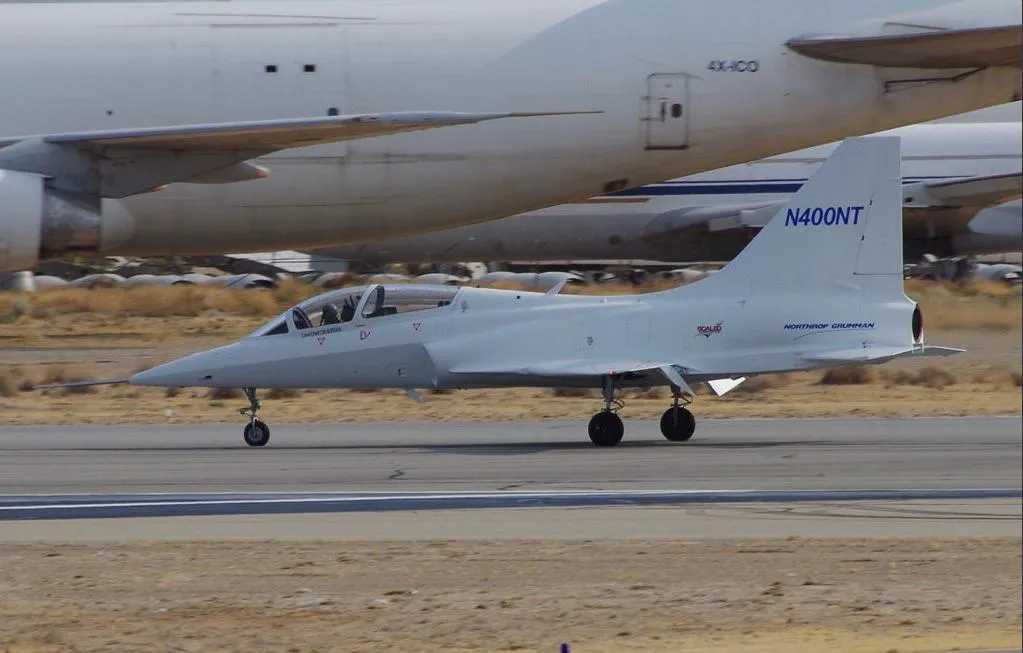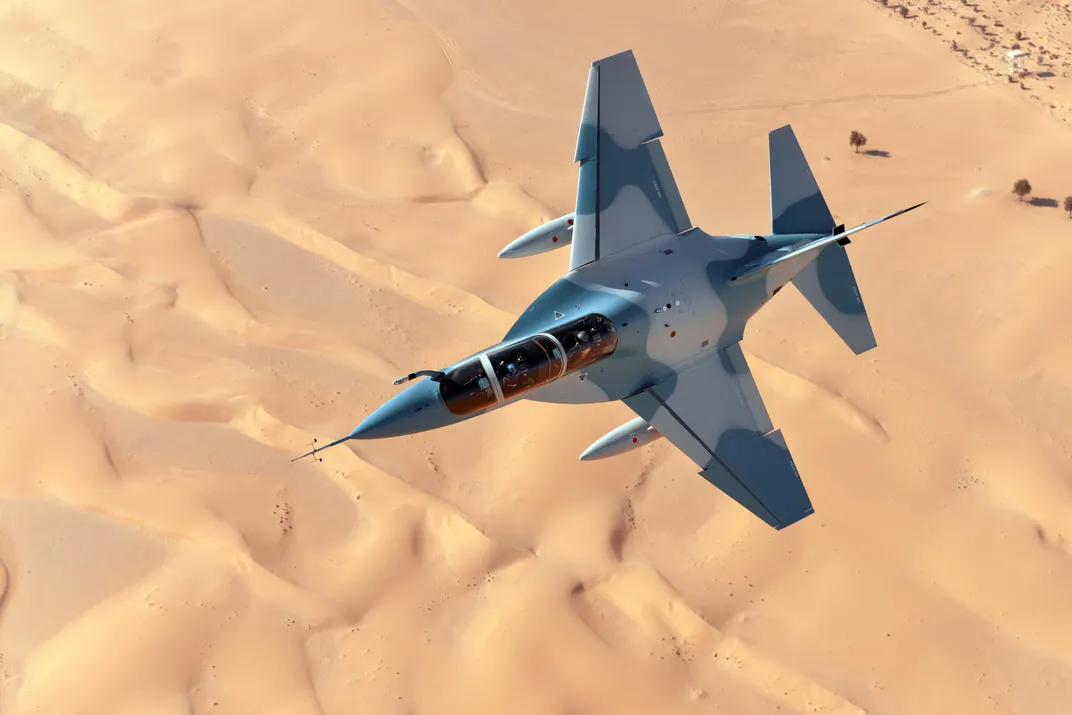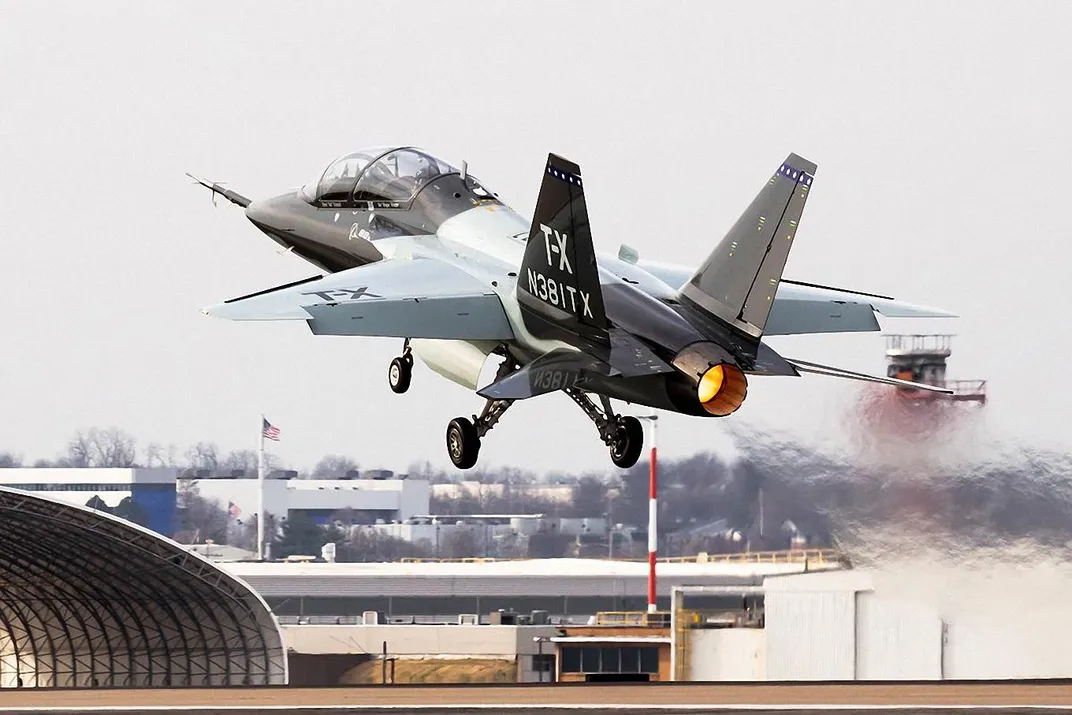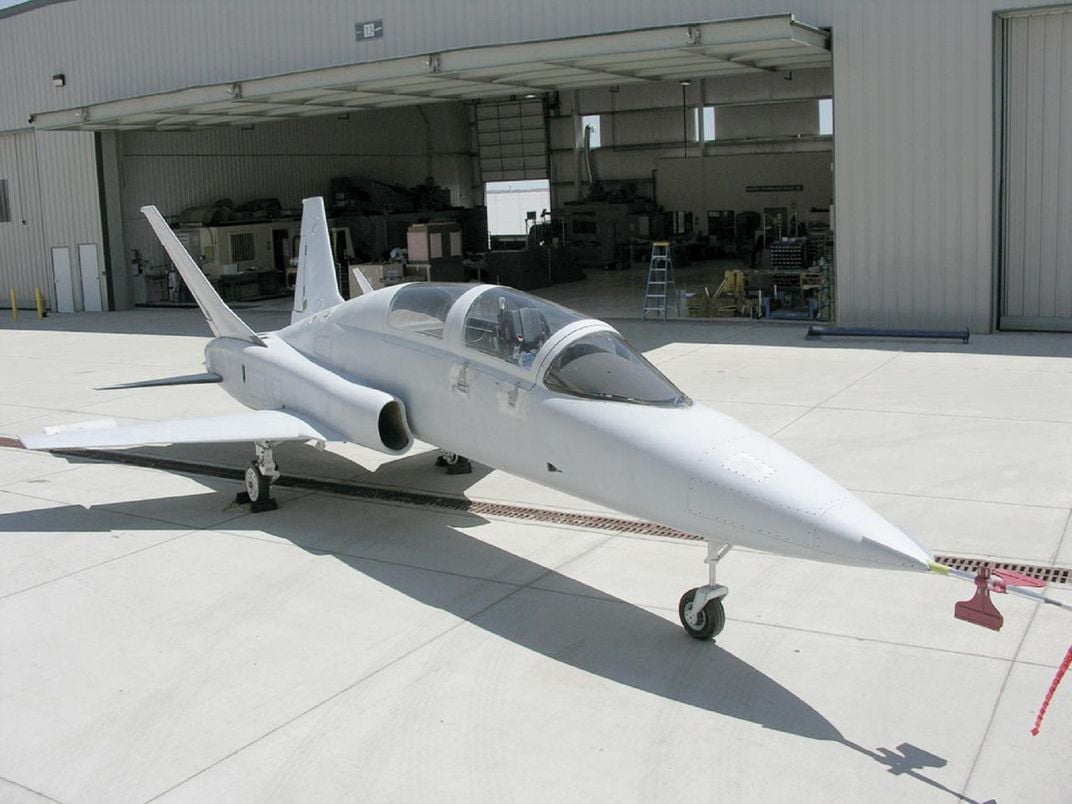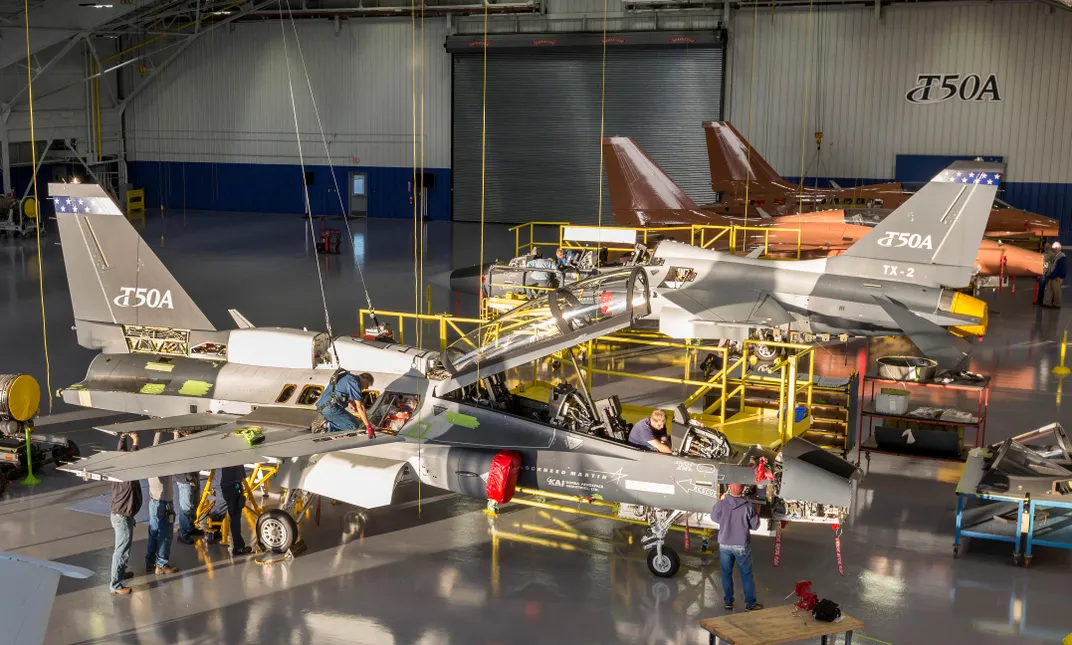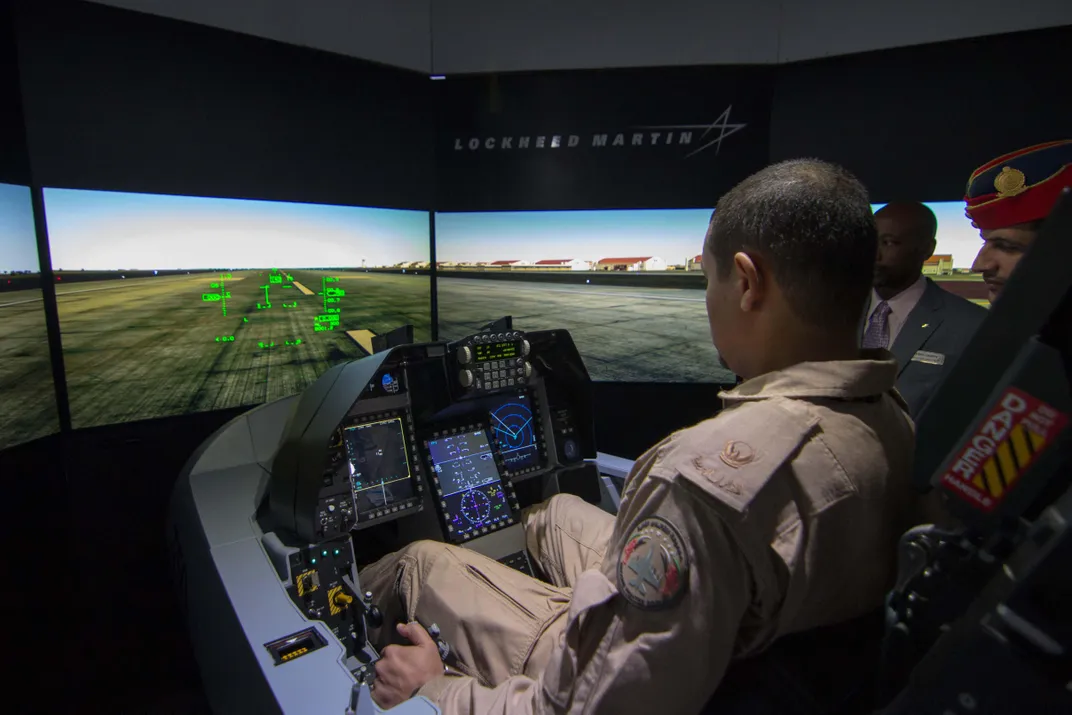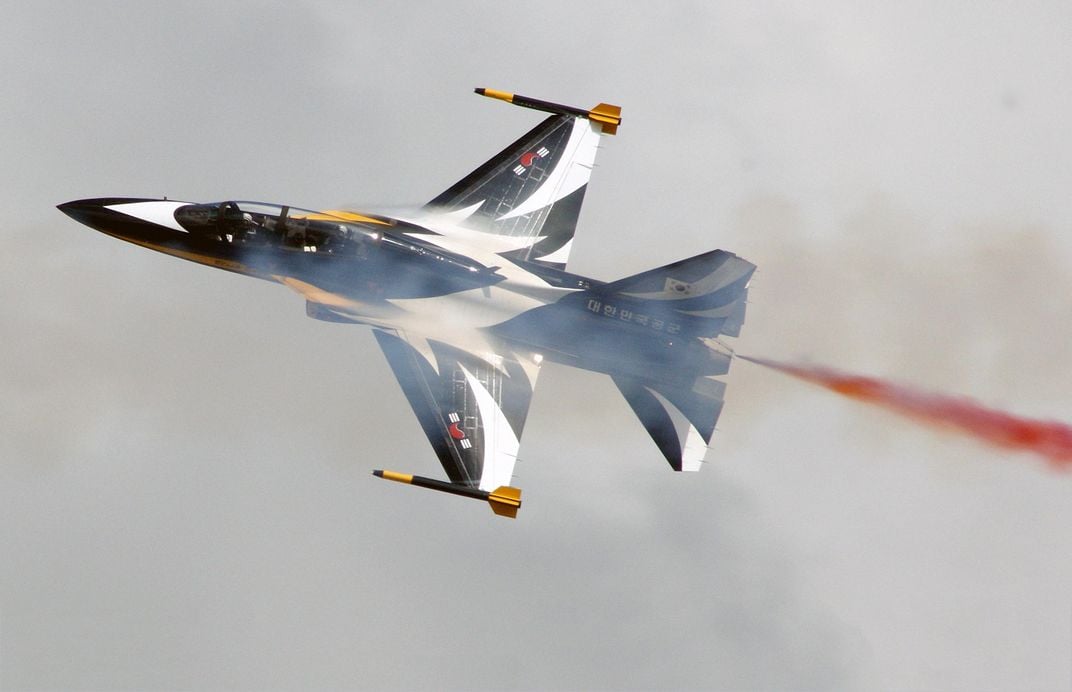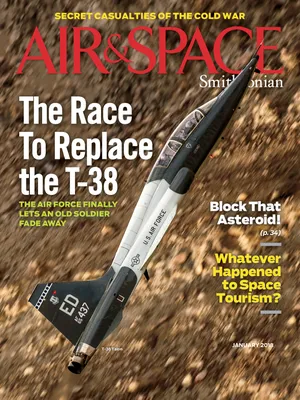Meet the Jets Competing to Become the Next Air Force Trainer
What will replace the nearly-60-year-old T-38?
/https://tf-cmsv2-smithsonianmag-media.s3.amazonaws.com/filer/85/7f/857f0aec-06ae-4000-bff0-ce19b3c07a6d/13q_dj2018_t38banking_live.jpg)
No one is calling it a jalopy just yet, but virtually every day, fledgling U.S. Air Force fighter and bomber pilots take to the sky for advanced pilot training in a jet that isn’t so advanced anymore.
The last Northrop T-38 Talon was built in 1972—when astronauts were still visiting the moon and the McDonnell F-4 Phantom was still the Air Force’s air superiority fighter. The Air Force retired its Phantoms 21 years ago. The Talon, meanwhile, keeps flying.
“Think about flying a plane three to four times a day, and putting an average of four landings on it each time,” says Colonel David Drichta, who heads the Undergraduate Flying Training division of the U.S. Air Force’s Air Education and Training Command (AETC). “If this were a driving school, we would have bought a new training car a long, long time ago.” Even if the airplanes weren’t worn out, the T-38 is simply obsolete: It cannot, for example, replicate the high-G, high-angle-of-attack tactics of the modern fighters that many of Drichta’s students will eventually fly. Pilots in training can’t hone their air-to-air refueling skills because the Talon lacks the hardware. They can’t practice much nighttime or beyond-visual-range fighting because the T-38’s antiquated circuitry was designed before most fighters were capable of such things.
In early 2018, the Air Force intends to address those training deficiencies. It will award a contract worth up to $16 billion to replace its 431 remaining T-38s with 350 brand-new trainers, dubbed “T-X” until a formal designation is chosen. If the plan holds, the first of the new two-seat jets will join the Air Force by late 2023, along with state-of-art ground-based simulators.
Four (perhaps five) teams have submitted bids to build the T-X, and the two front runners are dominant players in the global military aircraft industry: Boeing, in partnership with Saab AG of Sweden, and Lockheed Martin, teamed with Korean Aerospace Industries. Some observers believe that Italian company Leonardo (via its U.S. subsidiary, Leonardo DRS) has an outside chance of winning the Air Force contract. The two other entities in contention—upstart Stavatti Aerospace and small contractor Sierra Nevada Corporation (with Turkish Aerospace Industries)—are considered extreme longshots; though cited by the Congressional Research Service as a potential candidate, Sierra Nevada has not publicly confirmed or denied entering the competition.
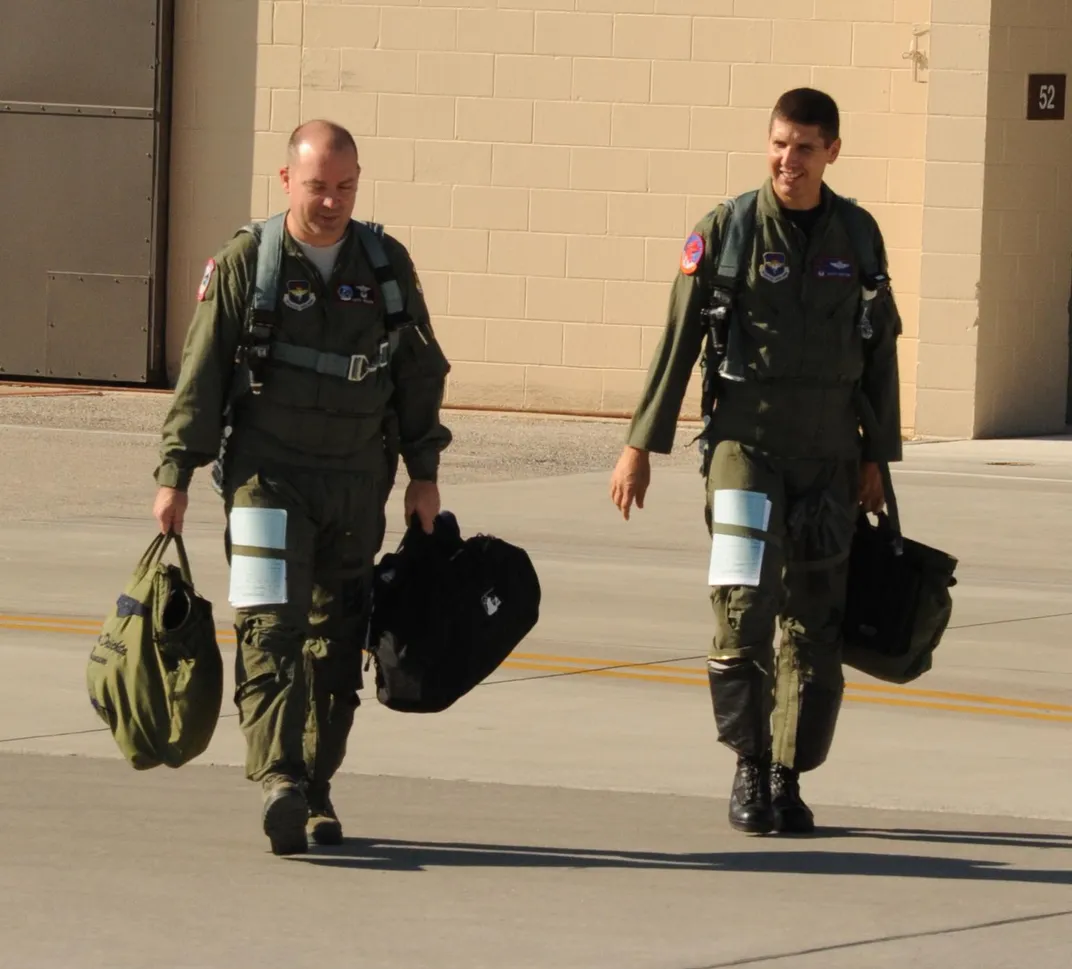
While a $16 billion order would be a plum achievement for any of the companies, neither Boeing nor Lockheed is depending on it, says Todd Harrison, a military budget analyst at the Center for Strategic and International Studies in Washington, D.C. For smaller competitors Sierra Nevada and Stavatti, the T-X award “would be a huge win,” Harrison says.
Surprisingly, one aerospace giant not vying to replace the T-38 is the one that built it: Northrop Grumman. The company initially announced that it would partner with United Kingdom-based BAE to offer an updated version of BAE’s Hawk T2, itself an updated version of a 1970s-era trainer. (A Hawk variant is the U.S. Navy’s advanced trainer, the T-45 Goshawk.) But that plan was jettisoned in favor of a “clean sheet” design specifically for the T-X contest. In August 2016, a visitor to California’s Mojave Air & Space Port, home to Northrop subsidiary Scaled Composites, posted online a picture of a sleek, unidentified new airplane. It was Northrop’s prototype T-X, which had been quietly designed, built, and—just days after the photo was taken—flown. Abruptly, after investing the considerable money that a flying prototype requires, Northrop bowed out of contention. The company released a terse statement that pursuing the project further was not in the “best interest of the companies and their shareholders,” and the prototype has not been seen since. (Northrop declined comment for this article.)
Aviation analyst Richard Aboulafia sees the T-X competition being decided in an old-fashioned fight to be the lowest bidder. In that regard, he says, Lockheed Martin and Leonardo may hold an advantage in that their entries are variants of existing airplanes, the Korean-built T-50 Golden Eagle and Italian-built M-346, respectively. Boeing and Saab, on the other hand, have come up with a completely new airplane design that Aboulafia says will require baking an estimated $1 million to $3 billion in development costs into its price.
**********
The Air Force’s T-38 roots go back to the Eisenhower administration. In the mid-1950s, Northrop was working on the N-156, a compact twin-engine fighter for potential use on the small escort aircraft carriers that were then in use. When the Navy ultimately demurred (and retired all its World War II-vintage escort carriers), Northrop courted the Air Force, which was in the market to replace its 1940s-era trainer, the Lockheed T-33 Shooting Star.
The first T-38 prototype flew in March 1959. Two years later, the jet entered service with the Air Force, becoming the world’s first supersonic trainer. By the time production ended, in 1972, nearly 1,200 T-38s had rolled off the assembly line. Northrop Grumman records show that more than 72,000 U.S. Air Force pilots have logged Talon time.
Air Force maintenance crews today do all they can to maintain the Talons, says civilian Larry Hudson, deputy chief of the training command’s maintenance division, but keeping them in the air presents constant challenges. They suffer from landing gear fatigue, stabilator wear, and cracking in the longeron—the main structure running the length of the fuselage, which helps keep the T-38’s cockpit securely in place.
To extend their service life, the Talons’ avionics have been upgraded over the years with some of the elements of a glass cockpit. The jets also have been retrofitted with new aluminum alloy wings. But as the airplanes age, replacement parts are becoming harder to find. Since 2011, fewer than three of four are considered useful for their intended purpose on a given day.
On the tarmac, the jet still looks every inch the hot rod. But the truth is that in performance, the T-38 is woefully inadequate compared with the F-15s and F-16s to which most Air Force fighter jocks transition. And there is zero comparison to fourth- and fifth-generation fighter aircraft like the F-22 Raptor and F-35 Lightning II; pilots leaving T-38s for those aircraft need to attend interim training in F-16s for exposure to newer electronics and high-G flight.
Yes, with the afterburners of its General Electric J-85 turbofans blazing, the T-38 can still reach Mach 1.3 (858 mph at 40,000 feet). And at 33,600 feet per minute, it can still climb like a bat out of hell. But of the 18 advanced training tasks required of today’s Air Force pilots, the Talon can handle only six.
“People often point to the 1950s cars still being driven in Cuba as an example of a stagnant economy,” Drichta says. “The T-38 is the same age. The only vehicles driving around your neighborhood from that era have ‘historic’ license plates.”
The new T-X will be at least 10 percent more fuel-efficient than the T-38, have better anti-icing capabilities, and be able to fly after dark with night-vision systems built into pilots’ helmets. It will need considerably less runway for takeoffs on hot days, and will be capable of executing sustained 6.5-G turns for at least 140 degrees, something the T-38’s airframe and wings were never engineered to do. It will be able to refuel in midair, like the airplanes its students will go on to fly. It will also come with integrated, data-linked flight simulators so well-networked that pilots will be able to practice aerial combat not only with pilots “flying” other simulators, but also with actual aircraft aloft.
**********
Boeing officials say they are confident that the trainer and simulator system they’ve built with their Saab partners will exceed the Air Force requirements. Their twin-tail entry is a “clean sheet” design specifically for the T-X competition. Two jets have been built, and are test-flown as often as four times a day.
“There are a lot of reasons why Boeing T-X is the best choice,” says Ted Torgerson, the company’s T-X program manager. “We designed the entire system—the aircraft, ground-based training and support—together from the ground up, which provides enhanced efficiencies.”
But analyst Aboulafia is skeptical. “I think it results in some cost savings, but I’m not sure how much, and there are many other variables that determine the aircraft’s costs,” he says.
If Boeing wins the contract, it will build the new trainers at its factory in St. Louis, Missouri.
Lockheed Martin believes it has a leg up on its competition principally because of the T-50’s record of service in other nations and also its very design, intended to emulate the F-35 in both handling and cockpit display. Such familiarity would allow for easier transition when pilots move up from advanced jet training.
Despite its long record of innovative aircraft design Lockheed saw no point in reinventing the wheel, says Mike Griswold, the company’s director of T-X business development. The T-50 started as a Korean Aerospace–Lockheed project, heavily influenced by Lockheed’s ubiquitous F-16 fighter. The first T-50 flew about 10 years ago and has since been adopted for both training and combat by South Korea, Thailand, Indonesia, the Philippines, and Iraq. The airplane’s cockpit and avionics were modified for T-X to be more F-35-like, according to Griswold. “There’s nothing left to invent,” he says. “We’re ready now.”
If Lockheed Martin wins the contract, their training jets would be built in Greenville, South Carolina.
Like the T-50, Leonardo’s Italian-built Aermacchi M-346—dubbed the T-100 for U.S. Air Force purposes—is no newcomer. The aircraft began life as a joint project with Russian company Yakovlev, but the partnership fell apart after a few years, and the two companies went their separate ways. (The M-346 looks strikingly like the Russian product of the collaboration, the Yak-130, but has no Russian components, says Leonardo.) Today, the M-346 can be found wearing the colors of the Italian, Israeli, Singaporean, and Polish air forces. And, like the T-50, Leonardo’s T-100 also offers a flight simulation system designed to emulate the handling and capabilities of advanced fighters like the F-35.
When asked if being Italian-based poses a disadvantage, Leonardo DRS chief executive officer, William J. Lynn III, scoffs. Both Boeing and Lockheed Martin, he is quick to point out, are partnered with foreign entities—an arrangement that Lynn, a former deputy secretary of defense, says the Pentagon became comfortable with long ago. “You simply want the best technology for the warfighter,” he says.
Leonardo plans to build T-100s in Tuskegee, Alabama.
Then there is Stavatti Aerospace, which has thrown not one but two aircraft into the competition. Stavatti’s first entry, the twin-engine, twin-tail Javelin, was first conceived by Aviation Technology Group in 1998 as a civilian sport jet, but the project ended after building a single aircraft. Stavatti snapped up ATG’s project, and intends to fly a new version in 2019, after extensive modifications, including a more powerful engine and greater fuel capacity. Stavatti’s founder and chief executive officer, Chris Beskar, says he believes his company can deliver Javelins at $10 million apiece, which would likely make them the least expensive trainers under consideration. The company anticipates building at least 10 airplanes for an undisclosed customer. It has not yet selected an assembly location.
The other aircraft Stavatti has pitched to the Air Force is the forward-swept-wing Super Machete SM-47. The Machete, Beskar boasts, is so advanced that he professes little worry if his company loses out in this competition. “I could just as soon win the contract 20 years from now,” Beskar says, “and supply the airplane in 2044.” So far, no prototype has been built or flown, and no customers have stepped forward.
If there’s a true dark horse in the race, it is the Freedom Trainer, proposed by Sierra Nevada and Turkish Aerospace. Company officials are extremely tight-lipped about the project, but a few details have trickled out, showing a twin-tail, twin-engine concept, similar to a Turkish Aerospace concept trainer and attack aircraft. In September, industry magazine Aviation Week published on its website two photographs showing what Sierra Nevada says is a prototype Freedom Trainer, which has yet to be flown. The company did not respond to queries.
**********
Today’s Air Force fighter-pilots-in-training log about 96 hours learning to fly the T-38. After graduating, they spend another 18 to 20 hours in the trainer, mastering the Air Force’s Introduction to Fighter Fundamentals course, before assignment to units where they learn to fly the likes of the F-15, F-16, and F-22.
What will change, Drichta says, will be the ability to “offload” sorties onto ground-based simulators, which cost less to operate. The new training jet also will let pilots accomplish more complex mission tasks earlier in the flight program, says Colonel Jonathan Duncan, chief of AETC’s Capability Requirements Division.
In March 2017, the military wrapped up yet another contract for replacement wings for the T-38, meant to keep the old birds aloft a few years more. “Any delay would result in grounded aircraft and mission delays/cancellation,” read the solicitation. The Air Force is moving on. Talon time, new wings or not, is limited.
